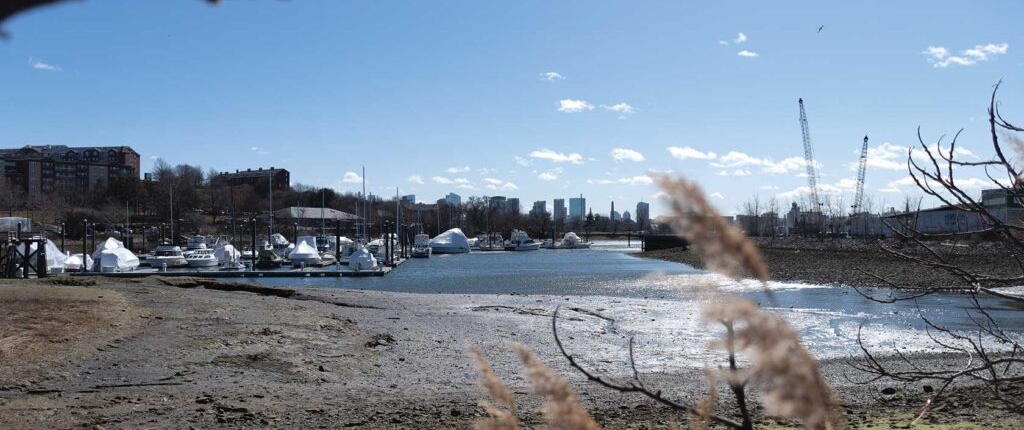Coastal Resilience Efforts Cross City Lines at Island End River in Chelsea and Everett (Bay State Banner)
Avery Bleichfeld (Bay State Banner)
As a low-lying coastal city, Boston is at heightened risk for coastal flooding. To examine the challenges and opportunities of coastal resilience efforts, the Banner is digging into three sites along the metro-Boston shoreline where flooding could pose high risks and solutions are being crafted to create new models for the future.
The Island End River cuts inland right at the line between Chelsea and Everett, following the municipal border for its 2,500-foot length.
That distance — about the length of eight football fields — is currently strewn with trash. Tall, reedy invasive phragmites crowd the marshy area tucked away behind fences. A park at one end is accessible only through one boardwalk backed by a row of warehouses.
But officials from both cities it touches are looking toward a future where the banks can be clean, the native salt marsh can be rejuvenated, the park can be more accessible, and the area can serve as flood protection for vital infrastructure and at-risk residential communities behind it as the area faces growing potential threats from a changing climate.
>>Read the full story via Bay State Banner
Supporting nature’s ‘big sponge and filter’
The marshes, like the one the Island End River project will restore, provide a host of benefits, slowing and buffering water coming in from tides and storm surges and filtering nutrients and contaminants in runoff coming toward the harbor.
Robert Vincent, an environmental scientist and the assistant director for advisory services at the MIT Sea Grant College program, called the marshes “a big sponge and filter.”
They can stabilize coastlines, collecting sediment and plant material through a process called accretion to grow and create a natural, raised area that can protect against tides and floods. They also provide habitat for both land and sea creatures, like birds, crabs and fish.
And healthy marshes are major “carbon sinks” — areas that collect and hold more atmospheric carbon than they release. According to a 2023 report from the Environmental Protection Agency that Vincent helped author, they can hold between four and 10 times more carbon than the same size area of a forest — carbon that is stored by the marsh, rather than contributing to climate change.
But rising seas pose challenges to the health of salt marshes. Increased flooding on the marsh surface can prevent plants from growing, which eliminates the protective nature of the marshes, and releases the carbon they’ve stored back into the atmosphere.
Development, especially between the mid-1800s and the 1970s, when the federal government and general public found greater recognition of the benefits of the habitat, also reduced the size of marshes across the region.
Vincent said he’s excited to see increased efforts around salt marsh restoration, and said he thought more coastal resilience efforts should include the marshes as an element.
“We’ve lost so much of this habitat, and it’s very important to continue to restore and conserve these habitats,” he said.




